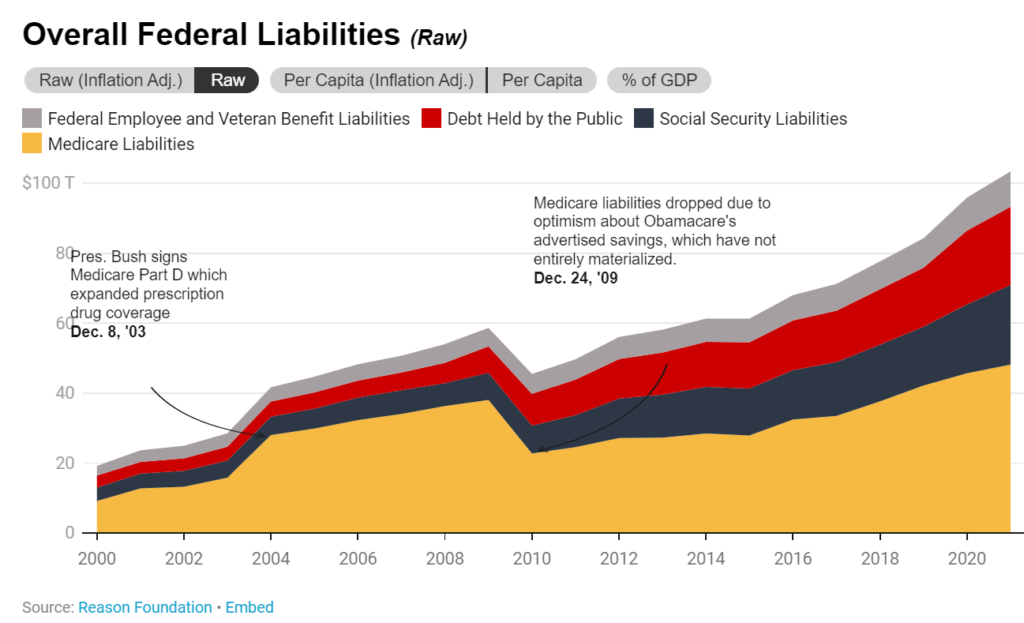Link: https://reason.org/debtor-nation/
Graphic:

Excerpt:
Organizations incur long-term financial obligations in forms other than bonds and the U.S. federal government is no exception. Some common types of financial obligations include pension and retiree health care costs for veterans, civilian federal employees, and the general public (through Social Security and Medicare benefit commitments). Looking at the federal government’s balance sheet as of 2021, public holdings of U.S. Treasury securities make up less than one-quarter of total federal liabilities. Unfunded entitlements, like Medicare and Social Security, account for the most at 59% of obligations.
Overall federal obligations have now surpassed $300,000 per American. While substantial in their own right, the debt obligations of state and local governments across the country are dwarfed by the various categories of federal debt.
Author(s): Jordan Campbell, Marc Joffe
Publication Date: 16 May 2022
Publication Site: Reason
